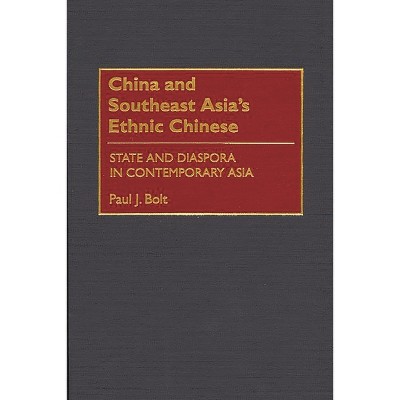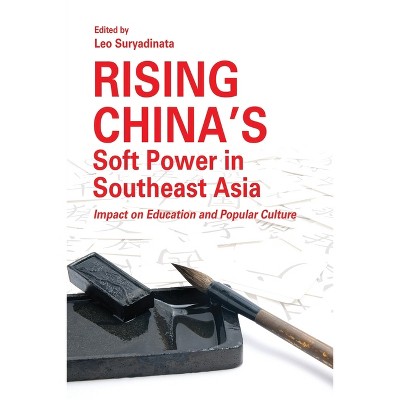Sponsored

The Talibanization of Southeast Asia - (Praeger Security International) by Bilveer Singh (Hardcover)
In Stock
Sponsored
About this item
Highlights
- Long before the terrorist attacks of September 11, 2001, awakened the United States and the Western world to the heightened level of the terrorist threat, Southeast Asia had been dealing with this threat.
- About the Author: Bilveer Singh is Associate Professor of Political Science at the National University of Singapore.
- 264 Pages
- Political Science, Law Enforcement
- Series Name: Praeger Security International
Description
About the Book
Long before the terrorist attacks of September 11, 2001, awakened the United States and the Western world to the heightened level of the terrorist threat, Southeast Asia had been dealing with this threat. The bombing in Bali that killed 202 people, many of them Australian tourists, was by no means the region's first experience with Islamic extremism, which can be traced back to the 1940s, and the Darul Islam struggle. The most recent group to emerge is Al-Jama'ah Al-Islamiyah (AJAI), the most potent Islamic terrorist organization to date in the region and the group behind the Bali bombing. Understanding the process of Talibanization in Southeast Asia, which was once an oasis of moderate Islam in the modern world, is a key to unraveling the mystery of the increased radicalization in the region.
Essentially, this involved the establishment of a political system that was more Islamic in character, either nationally or within a specific territory of a national state. This book analyzes the increasing Talibanization of Southeast Asia, a relatively new phenomenon that involves the adoption of Islamist doctrines, ideologies, and values that are largely militant in character, and that for some groups includes the adoption of violence to achieve their goals.
This has succeeded in posing one of the most serious security challenges to the region since the end of the Cold War. Jihadists are operating in small and localized cells even though the broad goals remain the same, namely, to spread sharia, establish an Islamic state, and bring down secular regimes. As most governments do not have the credibility or the expertise to diminish the threat posed by Islamist extremism, Wahhabism, and Salafism, Southeast Asia is in danger of being Talibanized in the near future.
Book Synopsis
Long before the terrorist attacks of September 11, 2001, awakened the United States and the Western world to the heightened level of the terrorist threat, Southeast Asia had been dealing with this threat. The bombing in Bali that killed 202 people, many of them Australian tourists, was by no means the region's first experience with Islamic extremism, which can be traced back to the 1940s, and the Darul Islam struggle. The most recent group to emerge is Al-Jama'ah Al-Islamiyah (AJAI), the most potent Islamic terrorist organization to date in the region and the group behind the Bali bombing. Understanding the process of Talibanization in Southeast Asia, which was once an oasis of moderate Islam in the modern world, is a key to unraveling the mystery of the increased radicalization in the region.
Essentially, this involved the establishment of a political system that was more Islamic in character, either nationally or within a specific territory of a national state. This book analyzes the increasing Talibanization of Southeast Asia, a relatively new phenomenon that involves the adoption of Islamist doctrines, ideologies, and values that are largely militant in character, and that for some groups includes the adoption of violence to achieve their goals. This has succeeded in posing one of the most serious security challenges to the region since the end of the Cold War. Jihadists are operating in small and localized cells even though the broad goals remain the same, namely, to spread sharia, establish an Islamic state, and bring down secular regimes. As most governments do not have the credibility or the expertise to diminish the threat posed by Islamist extremism, Wahhabism, and Salafism, Southeast Asia is in danger of being Talibanized in the near future.Review Quotes
"Singh writes a detailed and carefully defined analysis of the growth of Islamic extremism in Southeast Asia. Professor Singh is conscientious about defining the Islamic terms that he uses, noting their multiple meanings; however, he does not box himself in with overly narrow definitions. The book is organized into a well-written introduction; four chapters outlining the history of religious extremism and terrorism in Southeast Asia (principally Indonesia), the growth of transnational terrorist organizations, and the problems of counterterrorism policy in Southeast Asia; and a conclusion outlining policy suggestions for the governments of the region. Professor Singh's detailed knowledge of Islamic movements in Southeast Asia, and particularly Al-Jama'ah al-Islamiyyah, makes the book an interesting read complete with organizational charts and graphs of terrorist organizations and their global links.....Recommended. Research and professional collections." --Choice
"Singh sees kinship as being a vital element in the makeup of al-Jamaat al-Islamiyah--the organization responsible for the Bali nightclub bombings in October 2002. The people who form terror groups have to know and trust one another. In most Muslim societies it is kinship, rather than shared ideological values, that generates relations of trust." --The New York Review of Books "The merit of this book lies in the way in which it combines an analysis of the ideology of terror with a study of the methodology of terror." --The Strait TimesAbout the Author
Bilveer Singh is Associate Professor of Political Science at the National University of Singapore. A former Fulbright Scholar, he is the author of nine books, including Succession Politics in Indonesia: The 1998 Presidential Elections and the Fall of Suharto (2000), and Politics and Government in Singapore: An Introduction (2007).Shipping details
Return details
Frequently bought together

Trending Non-Fiction
















